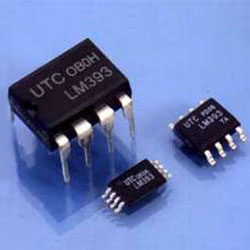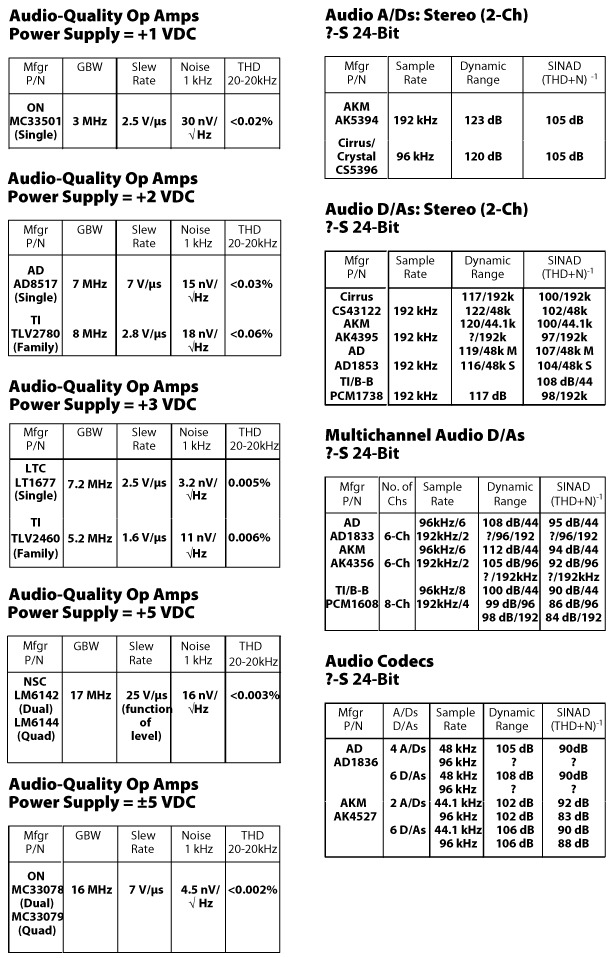
The End
And so we reach the end. Audio in a 1.5 volt world ends up as one chip with the audio deeply embedded in the silicon sand.
The key to pristine audio in any digital-based product (and what audio product isn’t nowadays?) is to keep the audio signal in a digital format from the source to the loudspeaker. Hardware and software solutions exist already to do it all.
Everything is here. Front-end A/Ds using powerful delta-sigma conversion technology producing 24-bit digital audio data streams with at least 120 dB dynamic range.
This will be integrated with enough programmable DSP power to handle all audio formats such as MP3, Dolby Digital, DTS, Advanced Audio Coding, MPEG-4 and all the evolving new ones, along with algorithms for 3D surround sound and all forms of equalization (tone controls, graphic, parametric, band-limiting, sweetening, loudspeaker compensation, etc.), as well as all types of dynamic response functions (compression, expansion, gating).
Headphones and loudspeakers will be driven directly from built-in true digital power amplifiers, and it will be done clickless and noise-free, with distortion products buried in the noise floor.
Complete with interconnectivity hardware supporting S/PDIF, USB, IEEE-1394, and developing new ones. Operating from a single AA cell, lasting all day with continuous play.
Like it or not, the all digital audio world is here to stay.
Authors Note
Portions of this paper appeared previously as “Audio in a 1.5 Volt World,” published in The Proceedings of the AES 18th International Conference: Audio for Information Appliances, Burlingame, CA., pp. 52-65, March 16-18, 2001, Audio Engineering Society.
Appendix A. Low-Voltage Audio Op Amp Selection Charts
Compiled March, 2001—Consult Manufacturer for Latest or Replacement
This is the fourth and final article in a multi-part series. Additional segments are available here.
Want to read this article in its entirety? Head on over to the Rane Website where you can read this article in in both HTML or PDF.
Supplied by Rane. For more, go to rane.com

